© MuseumQualityModels.com

CANNONS & Co.
Museum Quality Models & Miniatures
This website is a showcase of a private collection of highend quality bronze, brass and wooden cannons, mortars and reproduction of ancient models in different scales and from different ages. Feel free to contact us if interested in purchasing any of them.


Kingdom of Sardinia, 1843
Sardinian 16-pounder (Kg.6.6) Gribevaul with limber.
Field artillery usually employed cannon and howitzers to fire directly into visible enemy troops, firing either ball or canister ammunition measured in the weight of the cannon ball (in pounds). The heavier pieces were sometimes known as "position artillery" and were deployed in the same position for the duration of the battle due to the difficulty of moving them.
Scale 1:5
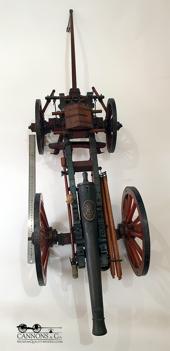
The artillery of the Kingdom of Sardinia under King Carlo Alberto
The Sardinian artillery was very similar to the French one, organized into brigades and each equipped with 4/6 pieces which made up a train pulled by 300 horses whose weapons were then assembled on site. The artillery was divided internally into field and mountain artillery, as well as battery (mortars and howitzers). Most of the artillery personnel were recruited in the province of Biella where the industries producing the weapons themselves were also located. In battle the artillery was assigned to the infantry in five pieces per brigade, while the cavalry were assigned 4 for each brigade.
The typical field artillery cannon of the Sardinian-Piedmontese army was the breech-loading sagro (saker) model 704, used regularly until 1848. The heavy artillery such as this model, was characterized by long cannons (8-16-32 pound culverins) to control even at long distances the essential places of passage even in the mountains and known as position artillery.
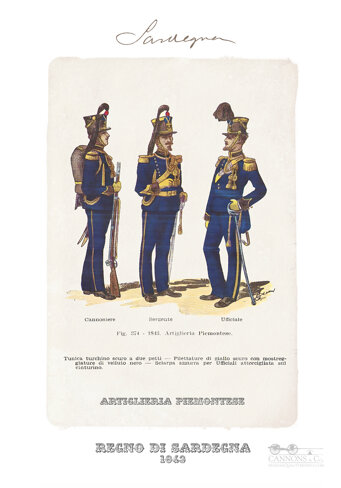
Below: Flag of the " Reale Corpo d'Artiglieria, Regno di Sardegna"
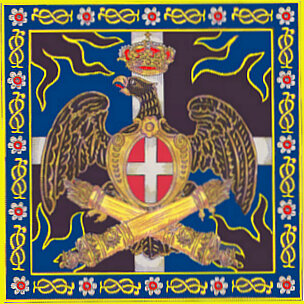



The position artillery «Cannone da 16»
"Per il cannone da 16 delle batterie da posizione era in servizio l'antico affusto tipo Gribevaul con avantreno a contrasto orizzonatle, già in servizio fin dal 1818 ma con alcune migliorie, come la vite di mira a chiocciola oscillante ed altri perfezionamenti. Gli affusti erano fonirti di ferramenta per fissare i cosiddetti 'armamenti dei serventi', e gli altrio materiali additivi; tra queste ferramnenta si notava il "tagliasoffioni", una specie di trancia applicata la lato sinistro dell'affusto per tagliare i soffioni, i quali servivano a dar fuoco al pezo in caso di cattivo tempo, piovoso o ventoso. L'affusto da attacco e difesa tipo Gribevaul è rimasto in servizio come modello vario fino al 1870. Nel 1848 [questo pezzo] era in servizio con il II Corpo d'Armata, 1^ Divisione, 3^ Batteria da Posizione (composta da 6 cannoni da 16) comandata dal Magg. Umberto Jaillet di S.Cergues."
From "STORIA DELL'ARTIGLIERIA VOL 5" by Carlo Montù - Esegesi dell'Artiglieria dell'Esercito a cura della Rivista di Artiglieria e Genio Roma, 1933

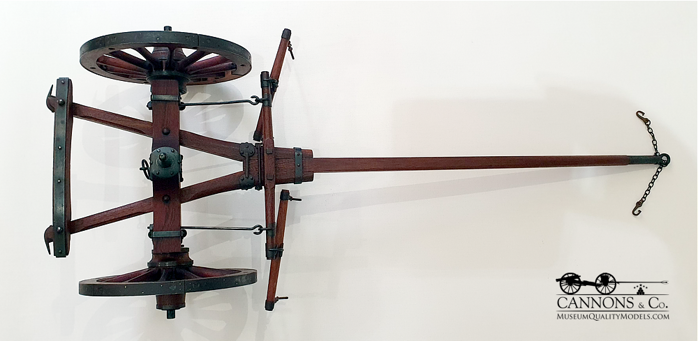





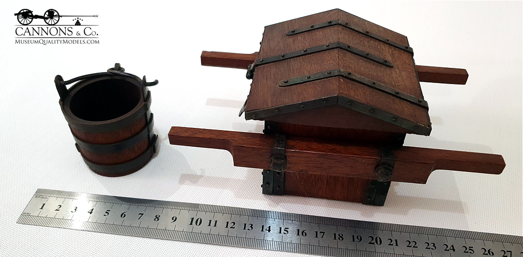
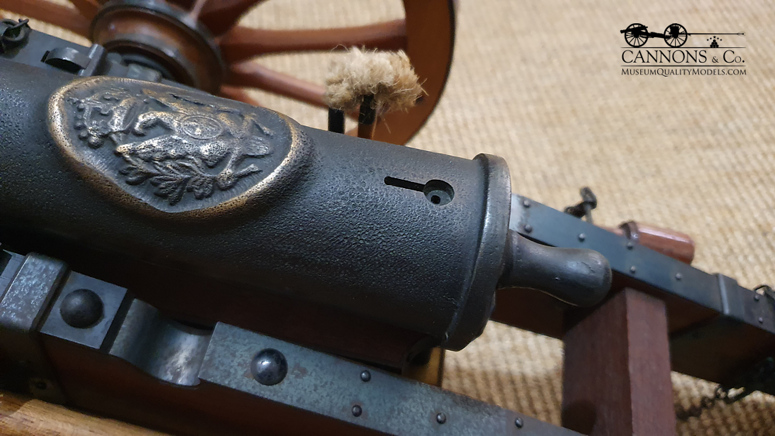




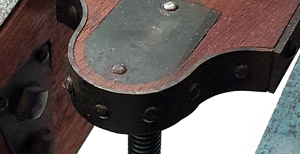
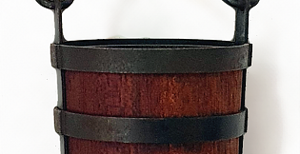
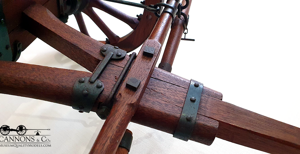
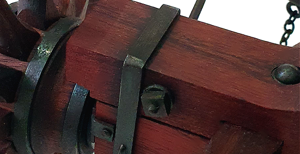
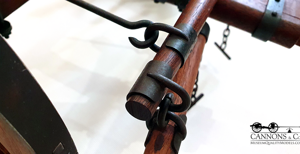

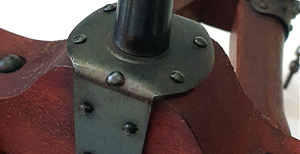

© MuseumQualityModels.com
